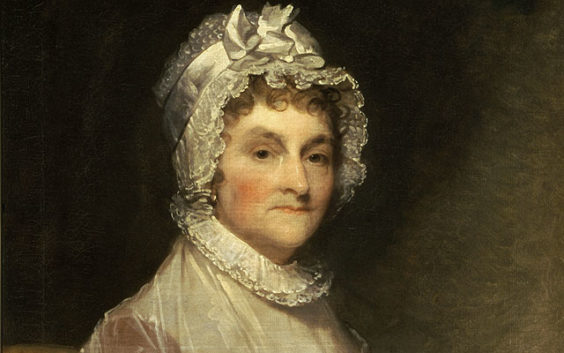Although many 18th-century women managed their families’ affairs in the absence of their husbands, Abigail Adams not only ran the household but also directed the family finances, usually with John’s advice and approval, but occasionally without either. Unusually for a woman of her time, she demonstrated a thorough understanding of financial matters and successfully invested in the bond markets and other public securities.
John Adams and the Traditional Approach to Investments
John Adams was the son of a Massachusetts farmer, and a farmer himself when he was not in public service. He held to the widespread belief that real wealth consisted of land; and when looking for investments to increase his income thought first of purchasing additional land. In 1783, while in Paris negotiating the treaty that ended the Revolutionary War, John wrote home to Abigail that she should inquire about purchasing two neighboring farms. She did so, but wrote back to John, “There is a method of laying out money to more advantage than by the purchase of land’s [sic].”
Abigail Adams and Investments in Financial Instruments
The thirteen newly independent states had dissolved not only their political ties with Great Britain, but their economic ones as well. The states started printing money, and also issued bonds, notes, certificates, and other financial instruments to help pay off the indebtedness incurred during the war. The various discount schemes by which these papers were sold and redeemed allowed substantial profits to be made by those who were knowledgeable about such matters and who had available spare cash.
Abigail Adams was both. Early in her “career” as an investor she bought a bond that had declined to 15 percent of its face value and held onto it until it was worth 85 percent, thus making herself nearly a fivefold profit. Although Abigail’s uncle Cotton Tufts, a Massachusetts physician, was nominally in charge of the family’s investments, Abigail had very specific ideas about which securities their money should be directed to.
Toward the Financial Independence of Women
In 1782 Abigail wrote to John complaining that under English common law, still in effect in the states, women could not control property in their own right, or enter into contracts unless acting as their husbands’ agents. But just three years later, she took an action which seemed to indicate that she was choosing to ignore that law. In 1785 she wrote to her uncle that her son John Quincy would soon be bringing him 50, and instructed him: “With this money which I call mine I wish you to purchase the most advantageous Bills and keep them by themselves.”
That simple phrase – “this money which I call mine” – can be seen as Abigail Adams’s declaration of financial independence. Just as the thirteen colonies’ declaration of political independence required a war to bring it into effect, so Abigail’s financial declaration would require many battles, over the course of many decades, to make it effective for all her countrywomen.








